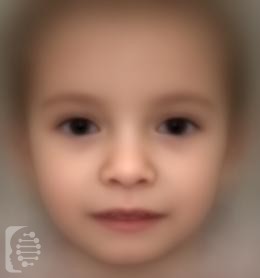What is Silver-Russell syndrome?
Silver-Russell syndrome is a rare genetic disorder characterized by limited growth both before and after birth known as intrauterine growth restriction. Babies born with the condition have a low weight at birth. It is often referred to as a congenital growth disorder.
Symptoms vary from mild to severe depending on the genetic mutations involved in each affected individual’s case.
Syndrome Synonyms:
RSS; Russel-Silver Syndrome; Silver-Russell Dwarfism; Silver-Russell syndrome; SRS
What gene change causes Silver-Russell syndrome?
In 60-70% of cases the syndrome is caused by mutations in the gene (one) SRS2 on chromosome 7, and ICR1 and IGF2 in chromosome 11. But HMGA2 in chromosome 12 and PLAG1 in chromosome 8 have also been linked to Silver-Russell syndrome.
In some cases, a genetic syndrome may be the result of a de-novo mutation and the first case in a family. In this case, this is a new gene mutation which occurs during the reproductive process.
In some instances the syndrome may be inherited in an autosomal dominant or autosomal recessive pattern.
Autosomal recessive inheritance means an affected individual receives one copy of a mutated gene from each of their parents, giving them two copies of a mutated gene. Parents, who carry only one copy of the gene mutation will not generally show any symptoms, but have a 25% chance of passing the copies of the gene mutations onto each of their children.
In the case of autosomal dominant inheritance just one parent is the carrier of the gene mutation, and they have a 50% chance of passing it onto each of their children. Syndromes inherited in an autosomal dominant inheritance are caused by just one copy of the gene mutation.
What are the main symptoms of Silver-Russell syndrome (SRS)?
The main symptoms of the syndrome are intrauterine growth restriction ( a low birth weight) and a failure to thrive once born.
Physical features of the syndrome include a large head in relation to the size of the body, a wide forehead, triangular face, small and narrow chin, curving of the pinky into the ring finger and cafe-au-lait coloured birthmarks. Facial and limb asymmetry are also common symptoms.
Motor and speech delay may also present with the syndrome depending on the severity of the case.
Possible clinical traits/features:
Growth hormone deficiency, Global developmental delay, Hepatocellular carcinoma, Short middle phalanx of the 5th finger, Short distal phalanx of the 5th finger, Hypospadias, Intrauterine growth retardation, Nephroblastoma, Micrognathia, Cafe-au-lait spot, Blue sclerae, Abnormality of skull size, Abnormality of the cardiovascular system, Abnormality of the foot, Abnormality of the ureter, Sporadic, Triangular face, Testicular seminoma, Frontal bossing, Craniopharyngioma, Delayed cranial suture closure, Delayed skeletal maturation, Clinodactyly of the 5th finger, Congenital posterior urethral valve, Craniofacial disproportion, Fasting hypoglycemia, Small for gestational age, Downturned corners of mouth, Syndactyly.
How is it diagnosed?
To find out if someone has a diagnosis of Silver-Russell syndrome, it is important to have a consultation and evaluation with a clinical genetic specialist. Specialists may also suggest specific genetic testing or other types of tests to help reach a diagnosis. FDNA’s AI technology can help speed up the diagnostic process by analyzing facial features and other health information.

